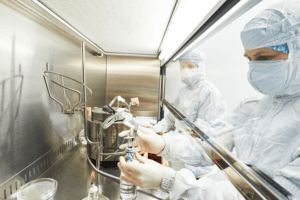Coronavirus Highlights Need for Healthcare Facilities to Have Power Protection Systems
Credit to Author: Hans Luppens| Date: Wed, 12 Feb 2020 14:51:00 +0000
As fresh reports pour in each day about the spread of the Chinese coronavirus, it should serve as a reminder to hospitals and other healthcare facilities just how important they are to the health and well-being of their communities – and why they need to ensure they have proper power protection systems to keep critical systems up and running.

A global pandemic
The response to the coronavirus indicates just how seriously governments and private businesses around the globe are taking it. As CNN reports, as of Feb. 11:
- Over 1,000 people are dead and more than 40,000 cases have been confirmed worldwide.
- Nearly 160 million people in China are expected to return to work this week, sparking new concerns about the spread of the virus.
- The coronavirus is now deadlier than SARS, which resulted in the deaths of 774 victims worldwide from November 2002 to July 2003.
Additionally, The New York Times reports Russia has closed its 2,600-mile border with China to pedestrians and cars while Delta Air Lines announced it plans to suspend all flights from the United States to China from Feb. 6 to April 30.
Perhaps most ominously, last month the World Health Organization declared the coronavirus outbreak a “public health emergency of international concern,” which it defines as an “extraordinary event.”
“Our greatest concern is the potential for the virus to spread to countries with weaker health systems, and which are ill-prepared to deal with it,” said WHO Director-General Tedros Adhanom Ghebreyesus.
No immunity from power issues
The ability to deal with it is certainly a legitimate concern. With respect to reliable access to power alone, some countries are far better off than others. Not so long ago, China was among those with power issues. While the country has been investing heavily in shoring up its grid and infusing it with renewable power in recent years, it is not quite out of the woods yet.
“China has built a massive amount of solar capacity over the past decade, pushing PV [photovoltaic] installations from around 415 MW in 2009 to an astonishing 175 GW last year,” according to a story in PV Magazine, which covers the solar industry. “However, the government is still struggling to improve interconnections between China’s far-flung provinces and six regional power grids.”
How to protect against power disruptions
As we all know, even areas with highly reliable grids are not immune from occasional power interruptions or even brief anomalies such as surges that can wreak havoc with sensitive medical equipment.
Protecting against power issues is why it’s so important for hospitals and other healthcare providers that are – or may be – on the front lines against the coronavirus to ensure their defenses are in order. That includes laboratories that are feverishly working on finding a vaccine for the virus and looking for clues on how to stanch its spread. Any power interruption could mean the loss of valuable data, potentially setting their work back. Sites acting as holding facilities for those under quarantine due to the virus should also be mindful of power protection, such as the air reserve based in California that held 195 people in early February.
Among the questions to consider is whether you have sufficient backup power to keep critical systems running in the event of an outage. Typically, this amounts to generators as well as uninterruptible power supply (UPS) systems, which keep critical systems – from computers to MRI machines – up and running in the time it takes the generators to fire up.
But it also requires a careful examination of how much power is “sufficient.” This was an issue California healthcare facilities came face to face with last year when they were subject to planned blackouts intended to help prevent wildfires. As this story at The Verge details, the situation led to decisions such as, “Do you keep your refrigerator full of vaccines running, or do you keep the community’s electronic health care records online?”
Healthcare facilities also need to periodically test their backup power systems to ensure they’re functioning correctly. In fact, in the United States and European Union, it’s the law that emergency power supply systems be tested monthly, as detailed in this previous post.
As that same post details, conducting periodic power assessments is likewise a good idea, to determine not only whether you have adequate backup power, but also surge suppression, power routing diversity, connector systems, and more. Testing backup systems under conditions that simulate an actual power event is also a good idea.
A practical guide on power protection systems to prepare for the worst
Healthcare facilities face the equivalent of crisis situations every day, at least from the perspective of the patients they serve. But pandemics like the coronavirus have the potential to raise the stakes to another level.
To learn about the practical steps your facility should take to be prepared, even in the face of power disruptions, download the free Schneider Electric reference guide, “A Practical Guide to Ensuring Business Continuity and High Performance in Healthcare Facilities.” This guide covers issues ranging from regulatory compliance and business continuity to sustainability and getting executive buy-in. Also, access our industrial business continuity web page, which offers additional resources to help your facility prepare for the challenge of events like the coronavirus presents.
The post Coronavirus Highlights Need for Healthcare Facilities to Have Power Protection Systems appeared first on Schneider Electric Blog.
